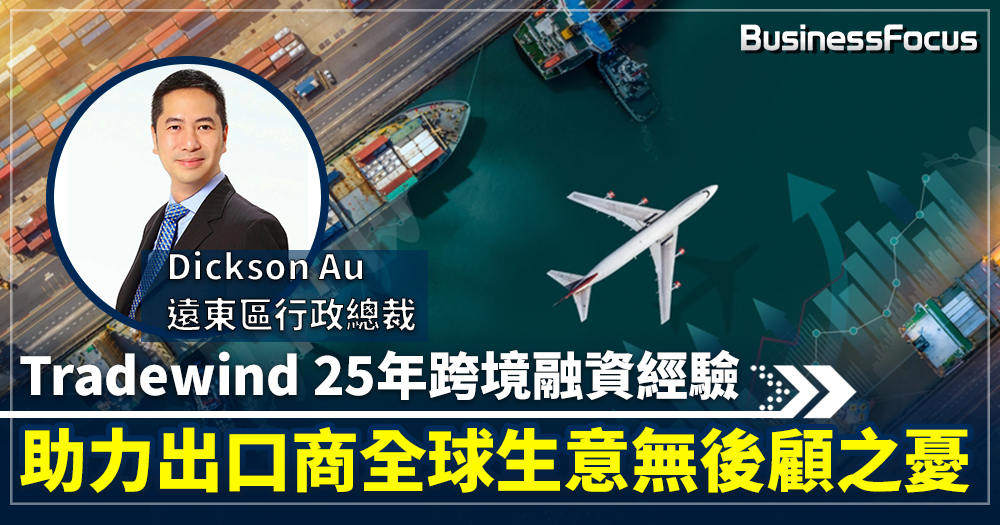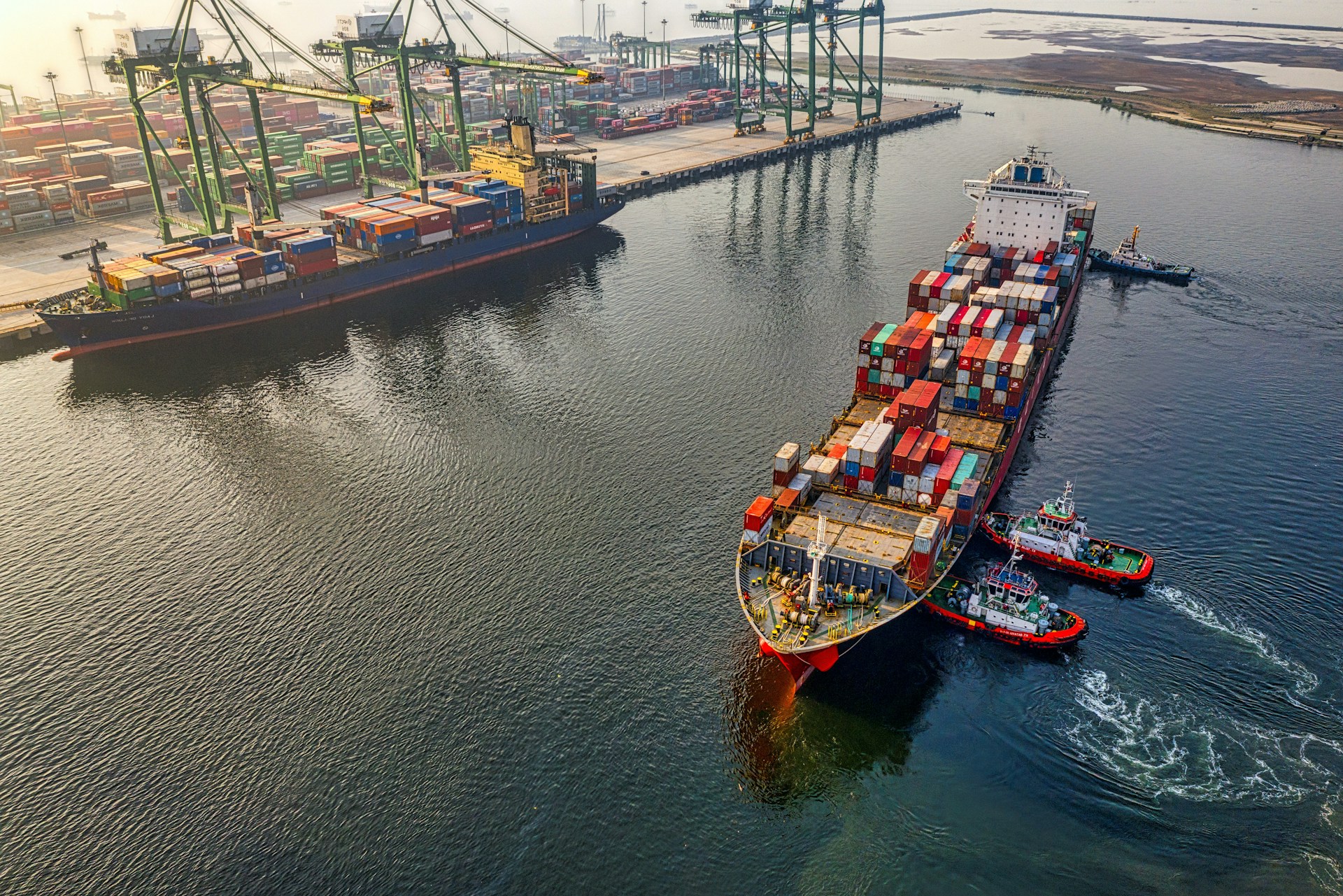*Published in Hong Kong Economic Journal Monthly (March 2024)
Asia’s export volume is expected to grow faster this year, benefiting from the prospective slowdown in global inflation and the projected interest rate cuts in the US, which is anticipated to drive up demand for international trade finance services. Tradewind Finance, which has been in business for 24 years, will deepen its presence in Southeast Asia this year, including the opening of branches in Singapore and Vietnam.
“Last year, inflation in Europe and the US, interest rate hikes, regional wars and the shipping crisis hit Asia’s export industry. Fortunately, these negative factors have gradually subsided and Asian exports have recovered since the fourth quarter of last year, which makes us optimistic about our business performance this year,” said Dickson Au, Regional CEO – Far East, at Tradewind Hong Kong.
He said that despite the unfavorable external environment last year, the company managed to find new clients in Southeast Asia, which offset the decline in shipments from some existing clients. It resulted in double-digit growth for the company’s business as a whole, which is expected to continue this year.
Hiring more staff to meet rising business demand
Headquartered in Germany, Tradewind Finance was founded in 2000 and has been committed to providing liquidity to international small and medium-sized enterprises (SMEs) for many years. In addition to factoring export accounts receivable, Tradewind also provides letter of credit discounting and supply chain financing to its clients. The company has more than 20 offices in 12 countries around the world, serving a wide range of industries including but not limited to the textile and apparel, food and beverage, frozen seafood, electronics, automobiles and parts, chemicals and consumer goods industries, and has been actively invested in the Southeast Asian market for the past year.
“We’ve made a good start in Southeast Asia,” Dickson pointed out. “In Vietnam, one of our new clients is a frozen seafood trader. We have been working with similar clients for more than 10 years and are quite familiar with the operation of this industry; we will also deepen our cooperation with this sector as well as with exporters of agricultural products and garments. Indonesia is also one of the key markets for us this year. Singapore is a relatively mature market, with a strong focus on commodity exports at present.”
He said that in recent years, due to the trade war between the US and China and other factors, many manufacturers and buyers have shifted production and sourcing outside China, which is one of the main reasons why the company has actively expanded into the Southeast Asian market in recent years. He added that the company is now placing Hong Kong as the regional operation center for the Southeast Asian and China markets, with 20 employees in Singapore, Vietnam, Guangdong, Shanghai and Beijing, which will be increased to 25 this year; it will also try to expand into the Philippines and Malaysia markets.
Helping clients to replenish cash flow for new orders
A variety of settlement methods can be used with Tradewind’s trade finance products, including open account (O/A), Cash against Documents (CAD), and Letter of Credit (L/C). Clients can have their accounts receivable insured by famous global credit insurance companies Tradewind works with after shipment, or they can find insurance companies themselves, such as the Hong Kong Export Credit Insurance Corporation (HKECIC). Within 24 to 48 hours of verifying an invoice, funding can be released by Tradewind, with an advance ratio of up to 95%. “This allows our clients to replenish their cash flow so that they can take on more orders and accelerate business growth,” he said.
“We don’t rely solely on credit insurance coverage because we have 24 years of professional experience and our own database to help clients evaluate buyer capabilities and avoid credit risks better,” Dickson said.
As an example, he said that the company has a long-established electronics manufacturer as a client in Hong Kong. The original facility amount was only USD 800,000, which has since grown to nearly USD 6 million within six months. Based on a 60-day payment term, with six shipments a year, the company’s turnover could reach USD 30-40 million. Another steel company’s original facility amount was only USD 6 million, which has increased to USD 11 million within one year as well.
Highly flexible service with no cap on the funding amount
Tradewind provided its financing services for the Turkish textile trade exporting to Europe in its early days and accumulated a lot of valuable experience. Later, it vigorously expanded its international business to various industries. The company customizes trade finance solutions for clients and helps them improve the efficiency of their capital flows to maximize and better address their funding needs through bookkeeping, collection and payment solutions.
Dickson said that traditional financial institutions generally require lenders to use properties and other assets as collateral and determine the total credit limit based on materials such as a company’s balance sheet, making it difficult for many SMEs with limited net assets to borrow money. For example, a client in Indonesia, who operates a garment factory with 200 to 300 employees, had difficulty obtaining loans from local banks due to net debt appearing on the balance sheet, so it turned to Tradewind’s alternative financing arrangements.
He also pointed out: “Our service is very flexible, and the funding amount we can provide is mainly granted based on the creditworthiness of the client’s buyers. Even for a company with a weak balance sheet, we are also willing to provide funds for it as long as it receives orders and fulfills its shipping responsibility. We also support new companies even that have been established for less than two years, depending on the situation.”
Reducing a lot of transaction risks for customers with professional services and knowledge
In recent years, due to the market environment, many buyers have also requested suppliers to provide payment terms. However, suppliers generally have limited information about their buyers. Some of them have lost new business opportunities in order to avoid risks, while others have misplaced their trust in unqualified buyers or even fake buyers in order to increase their business volume, which has ultimately resulted in losses. With professional experience and knowledge, Tradewind has successfully identified fake or unstable buyers for many clients, allowing them to achieve a good balance in risk management while actively expanding their business.
Tradewind provides exporters with 5 free buyers’ credit checks. If interested, please click here to contact us.



